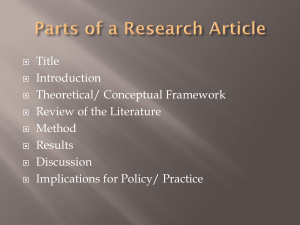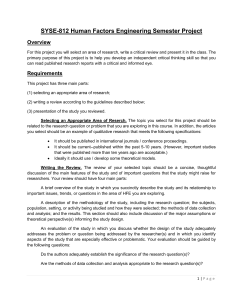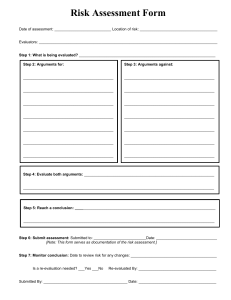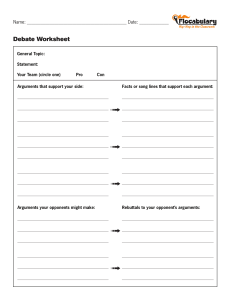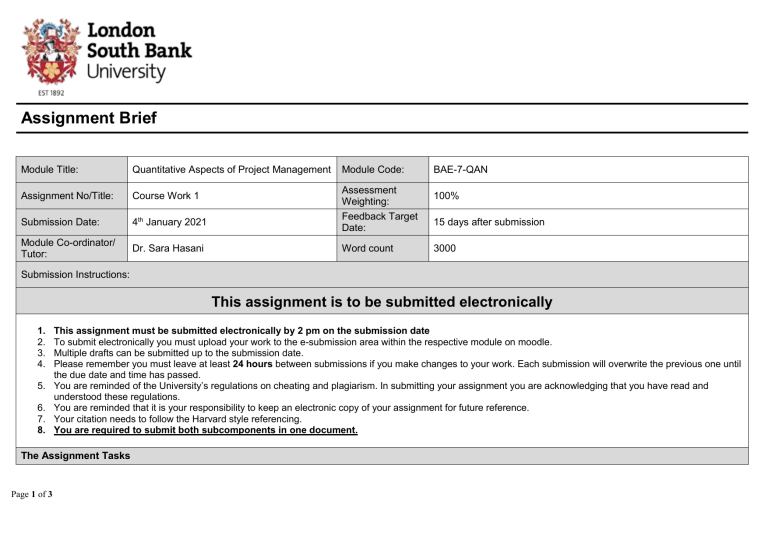
Assignment Brief Module Title: Quantitative Aspects of Project Management Assignment No/Title: Course Work 1 Submission Date: 4th January 2021 Module Co-ordinator/ Tutor: Dr. Sara Hasani Module Code: Assessment Weighting: Feedback Target Date: Word count BAE-7-QAN 100% 15 days after submission 3000 Submission Instructions: This assignment is to be submitted electronically 1. 2. 3. 4. 5. 6. 7. 8. This assignment must be submitted electronically by 2 pm on the submission date To submit electronically you must upload your work to the e-submission area within the respective module on moodle. Multiple drafts can be submitted up to the submission date. Please remember you must leave at least 24 hours between submissions if you make changes to your work. Each submission will overwrite the previous one until the due date and time has passed. You are reminded of the University’s regulations on cheating and plagiarism. In submitting your assignment you are acknowledging that you have read and understood these regulations. You are reminded that it is your responsibility to keep an electronic copy of your assignment for future reference. Your citation needs to follow the Harvard style referencing. You are required to submit both subcomponents in one document. The Assignment Tasks Page 1 of 3 Subcomponent 1 (20%) / Digital Poster – Research and select a failed project. Discuss the case with your tutor before starting your work. Assuming that you are appointed as a project manager to fix this failure, provide your analysis on the reason for failure and the solution. At this point you do not need to go into quantitative details. But make sure to select a case which can accommodate both subcomponents. In the assigned session produce an individual poster to address the followings: 1. Describe the failure scenario with connection to project constraints. 2. Evaluate the existing waterfall frameworks and select the appropriate one for your project. 3. Using the chosen framework, list a summary of actions you would take as a project management to prevent the failure. Subcomponent 2 (80%) / 3000 words – Following the project discuss above, address the following in a report 1. Provide a background research on the project failure and the project management theories and techniques related to that (at least 15 references) 2. Explore at least 2 quantitative and 2 qualitative project management tools to address the issue. 3. Select one qualitative and one quantitative tools which can be collectively used to prevent the project failure above. 4. Show the process and calculation in using above tools from the start of the project until termination. Assessment Criteria: Each task is being marked according to the following rubric: Feedforward comments Criteria 100-80% 79-70% 69-60% 59-50% 49-40% 39-30% 29-0% 1. Research Systematic identification and use of academic and relevant resources Extensive independent relevant research evidenced by quality and quantity used. Ability to draw on own research and that of others. Extensive independent relevant research evidenced by quality and quantity used. Some autonomous research. Wide range of relevant sources identified and used. Very little guidance needed. A range of sources identified and used. Limited guidance needed. Limited research identified and used. Some guidance needed to complete research tasks. Some evidence of research but insufficient amount. Needs support to develop research skills. Little or no research presented. Needs significant support to develop research skills. 2. Subject Knowledge Understanding and application of subject knowledge. Contribution to subject debate. Shows sustained breadth, accuracy and detail in understanding key aspects of subject. Contributes to subject debate. Awareness of ambiguities and limitations of knowledge. Very high-quality analysis developed independently. Sustained evaluation and synthesis of resources. Use of evidence-based arguments. Thoroughly identifies trends, inconsistency, congruence, and states the implications. Shows breadth, accuracy and detail in understanding key aspects of subject. Contributes to subject debate. Some awareness of ambiguities and limitations of knowledge. Accurate and extensive understanding of key aspects of subject. Evidence of coherent knowledge. Accurate understanding of key aspects of subject. Evidence of coherent knowledge. Understanding of key aspects of subject. Some evidence of coherent knowledge. Some evidence of superficial understanding of subject. Inaccuracies. Little or no evidence of understanding of subject. Inaccuracies. Sustained evaluation and synthesis of resources. Use of evidence-based arguments. Thoroughly identifies trends, inconsistency, congruence, and states the implications. Evaluation and synthesis of resources. Use of evidencebased arguments. Identifies trends, inconsistency, congruence, and states the implications. Evaluation and synthesis of resources. Use of evidence-based arguments. Some attempt at evaluation and synthesis of resources. Some use of evidencebased arguments. Limited evaluation of resources. Limited use of evidencebased arguments Little or no evaluation of resources. Very little use of evidence-based arguments. 3. Critical Analysis Analysis and interpretation of sources, literature and/or results. Structuring of issues/debates. Page 2 of 3 4. Testing and ProblemSolving Skills Design, implementation, testing and analysis of product/process/system/i dea/solution(s) to practical or theoretical questions or problems Autonomous creation and novel implementation. Adapts to unforeseen practical and theoretical challenges to achieve identified goals. Almost entirely autonomous creation and implementation. Adapts to unforeseen practical and theoretical challenges to achieve identified goals. Mainly autonomous creation and implementation. Adapts to unforeseen practical and theoretical challenges to achieve identified goals. 7. Communication and Presentation Clear intention in communication. Audience needs are predicted and met. Presentation format is used skilfully. Work is well structured. Communication is entirely clear, persuasive and compelling with very skilful use of the presentation format. Presentation addresses fully the needs of the audience. Communication is clear, persuasive and compelling with very skilful use of the presentation format. Presentation addresses fully the needs of the audience. Communication is clear, mostly persuasive and compelling with skilful use of the presentation format. Presentation addresses the needs of the audience. Quality Assurance Record Name: Date: Name: Date: Signature Signature Internal Approval: Page 3 of 3 External Approval: Some autonomy to create and implement. Some adaption made to unforeseen practical and theoretical challenges to achieve identified goals. Communication is clear, with skilful use of the presentation format. Presentation takes into account the needs of the audience. Exploration of possible solution(s). Use of established approaches to resolve practical and theoretical problems. Limited exploration of possible solution(s) using established approaches to resolve practical and theoretical problems. Little or no exploration of solution(s). Question or problem unresolved. Communication is mostly clear and presentation format is adequate. Presentation may sometimes not take into account the needs of the audience. Communication is unclear because presentation format is not used adequately and/or the needs of the audience are not taken into account. Communication is very unclear because presentation format is not used adequately, and the needs of the audience are not taken into account.
